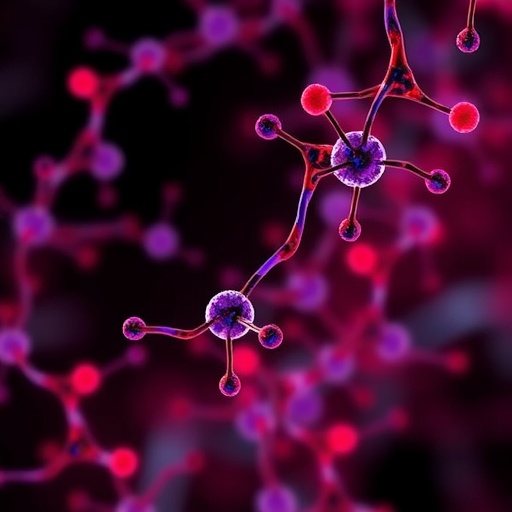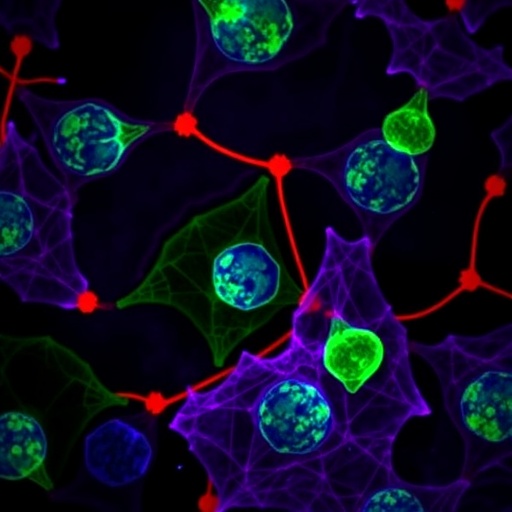A groundbreaking study by researchers at the Anhui Institute of Optics and Fine Mechanics (AIOFM), part of the Hefei Institutes of Physical Science under the Chinese Academy of Sciences (CAS), in collaboration with the Hefei Cancer Hospital of CAS, has unveiled an innovative method to dramatically improve the quantitative analysis of hemoglobin (Hb) levels in whole blood using near-infrared spectroscopy (NIRS). This advancement stands to transform non-invasive blood diagnostics by overcoming longstanding technical hurdles that have previously prevented high-fidelity measurement of hemoglobin concentration.
Near-infrared spectroscopy, prized for its non-destructive and sensitive probing of biological tissues, exploits the spectral range where biological chromophores such as hemoglobin exhibit characteristic absorption features. However, quantification of hemoglobin within whole blood samples has been notoriously complicated by intense water absorption bands, scattering phenomena intrinsic to heterogeneous blood samples, as well as instrument-induced noise. These combined effects notoriously obscure hemoglobin’s subtle spectral signatures, greatly impeding the accuracy and reliability of conventional NIRS-based quantitative evaluations.
Addressing this fundamental challenge, the research team has developed an integrated signal processing and feature extraction pipeline that employs the synergistic use of Wavelet Packet Transform combined with a Fuzzy Shrinkage (WPT-FS) denoising scheme, alongside the Whale Optimization Algorithm (WOA) for optimal feature node selection. This sophisticated fusion of adaptive multiscale denoising and advanced swarm intelligence enables precise isolation of hemoglobin’s spectral fingerprints within a noisy and high-dimensional data landscape.
The first pillar of this methodology, the WPT-FS denoising model, leverages wavelet packet decomposition to dissect the spectral signal into frequency sub-bands, permitting localized noise reduction across multiple scales. The introduction of an adaptive fuzzy shrinkage threshold function goes beyond rigid hard or soft thresholding by flexibly scaling coefficients in a manner that preserves essential spectral features while suppressing noise artifacts. This nuanced approach enables the retention of critical hemoglobin-related spectral information typically masked in traditional denoising processes.
Complementing this, the Whale Optimization Algorithm mimics the bubble-net hunting behavior of humpback whales to explore and exploit the high-dimensional feature node space, effectively converging on optimal combinations of spectral variables that correspond strongly to hemoglobin absorption characteristics. Using swarm intelligence principles, WOA dynamically balances exploration and exploitation, thus uncovering intricate nonlinear dependencies and enhancing model interpretability.
Subsequent to feature extraction, the refined data is subjected to Partial Least Squares (PLS) regression modeling, a powerful statistical tool that handles multicollinearity common in spectroscopic data, allowing for robust quantitative prediction of hemoglobin concentration. Together, these components form a cohesive analytical framework capable of delicately navigating the complexities inherent in whole-blood NIRS spectra.
In experimental validation using 106 whole-blood samples, this integrated methodology demonstrated remarkable performance improvements. The root mean square error of prediction (RMSEP) was dramatically reduced to 2.0409, while the prediction coefficient of determination (R²_P) reached an impressive 0.9746, signaling highly accurate and consistent predictions across diverse samples. Such metrics indicate the method’s superior ability to distinguish hemoglobin signals amidst substantial biological and instrumental noise backgrounds.
Further affirming the robustness of the model, data augmentation experiments were conducted to simulate more heterogeneous sample distributions commonly encountered in clinical environments. The model maintained high accuracy, with an average percentage error approximating just 1.7%, indicating resilience against sample variability and potential for widespread applicability in real-world diagnostic settings.
The significance of this work extends beyond mere analytical precision. By delivering a reliable, non-invasive technique capable of exact hemoglobin quantification, the approach bolsters the potential of NIRS equipment in routine clinical diagnostics and ongoing health monitoring, circumventing the need for invasive blood draws. This is particularly critical for vulnerable patient populations requiring frequent hemoglobin level assessments, such as those with anemia or undergoing chemotherapy.
Moreover, the adaptability of the combined WPT-FS and WOA framework presents exciting possibilities for extension to other biomedical targets whose spectral signatures are similarly obscured by biological noise. By providing a blueprint for sophisticated spectral feature extraction and quantitative modeling, this research heralds a new era of high-fidelity, label-free blood analysis technologies.
Prof. HAN Xin, the principal investigator leading the study, emphasized the transformative promise of these findings. “Our integrated method transcends conventional noise reduction and feature selection limitations,” HAN stated, “enabling precise hemoglobin quantification that was previously out of reach with whole blood NIRS. This advances both fundamental spectroscopic analysis and practical medical diagnostics.”
The study, published in the esteemed journal Biomedical Signal Processing and Control, represents a key step forward in biomedical optics and signal processing. As non-invasive approaches continue to gain momentum in personalized medicine, such advances are poised to enhance diagnostic workflows, reduce patient discomfort, and facilitate timely clinical decision-making.
Beyond clinical relevance, this innovative work underscores the power of interdisciplinary collaboration—blending optical physics, computational intelligence, and clinical expertise—to unravel complex biospectroscopic challenges. The fusion of wavelet-based denoising with bio-inspired optimization algorithms is indicative of emerging paradigms for intelligent biomedical data analysis.
Looking forward, the team plans to expand their investigation towards real-time hemoglobin monitoring systems, integrating the proposed algorithmic framework with handheld NIRS devices to enable point-of-care applications. Additionally, exploring other hemoglobin derivatives and related blood biomarkers within this framework will further broaden the diagnostic utility and impact of this technology.
In sum, the newly developed Wavelet Packet–Fuzzy Shrinkage combined with Whale Optimization-based method represents a paradigm shift in quantitative NIRS analysis of hemoglobin, offering unprecedented accuracy and robustness. This not only addresses a critical bottleneck in blood spectroscopy but also opens avenues for non-invasive, precise, and rapid blood diagnostics critical to advancing modern healthcare.
Subject of Research: Quantitative analysis of hemoglobin in whole blood using near-infrared spectroscopy enhanced by wavelet packet-fuzzy shrinkage denoising and whale optimization algorithm.
Article Title: Hemoglobin feature extraction based on wavelet packet-fuzzy shrinkage denoising model for improving the accuracy of whole blood NIRS quantitative analysis
News Publication Date: 5-Sep-2025
Web References: DOI: 10.1016/j.bspc.2025.108550
Image Credits: HAN Xin
Keywords: Physical sciences
Tags: biospectroscopy advancementschallenges in hemoglobin quantificationFuzzy Shrinkage denoising methodshemoglobin concentration measurement techniquesimproving accuracy in medical diagnosticsintegrated techniques in bioinformaticsnear-infrared spectroscopy quantitative analysisnon-invasive blood diagnostics innovationsoptical techniques for blood analysissignal processing in spectroscopyWavelet Packet Transform applicationsWhale Optimization Algorithm in data analysis





